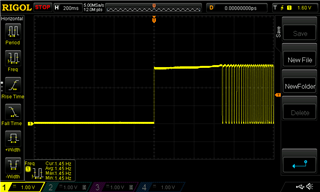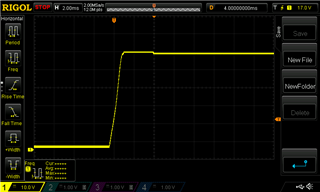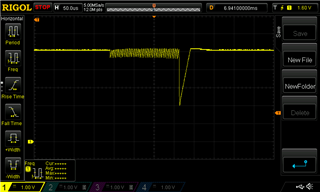Other Parts Discussed in Thread: , TPS23755
Hello -
I'm working on a PoE design for a customer and have come up with the attached schematic. When the PoE source is plugged into this design the output voltage from the transformer appears to go to 5V for 10ms before coming down to closer to 2.5V for an additional 10ms. This odd, 40Hz oscillatory behavior appears to happen continuously. Please see the picture and schematic attached.
During the investigation steps for this problem, I disconnected the PoE source from the device and when I tried to plug it back in I didn't see any output voltage from the transformer. The TPS23758 was hot to the touch and I am now measuring approximately 25Ω from VPD to RTN of this board (i.e. across C31 and C32).
When I measure the voltage across C31 and C32 in this "shorted" state, I see that the voltage is approximately 1.3V.
Given the supply chain shortages I am nervous to replace the IC and test again. Are there any recommendations or immediate issues that are seen with this design?
Thank you in advance.
-Shane















